To begin with, proper ventilation in shipping container homes plays a paramount role in ensuring the safety and longevity of stored items. Without adequate ventilation, there are various risks and issues that can arise, jeopardizing the condition of your valuable goods.
On the other hand, implementing proper ventilation brings a multitude of benefits, including enhanced air circulation, moisture control, and prevention of damage caused by extreme temperatures.
In this comprehensive guide, we will delve into the importance of proper ventilation and address the risks associated with inadequate ventilation in shipping containers.
We will also explore the numerous benefits that come with ensuring appropriate air flow for your stored items.
Furthermore, we will provide you with an easy-to-follow content plan that will equip you with the knowledge and step-by-step instructions on how to vent a shipping container effectively.
A. Importance of Proper Ventilation in Shipping Containers
- Risks and Issues Related to Inadequate Ventilation in Shipping Containers
- Accumulation of condensation leading to mold, mildew, and corrosion
- Potential damage caused by extreme temperature fluctuations
- Poor air circulation impacting the quality of stored goods
- Benefits of Proper Ventilation for Items Stored in Shipping Containers
- Prevention of moisture-related issues
- Improved air flow for temperature regulation
- Preservation of item quality through proper ventilation
B. Overview of the Content Plan
The content plan for this guide will cover various aspects of venting a shipping container, including the supplies and equipment you will need, step-by-step instructions for proper ventilation installation, and tips for maintenance and troubleshooting.
By following this content plan, you will gain the knowledge and skills necessary to successfully vent your shipping container, ensuring the optimal conditions for the safety and long-term preservation of your stored items.
Table of Contents
Understanding Shipping Containers and Ventilation
Shipping containers are large, metal containers primarily used for transporting goods over long distances. They are designed to be durable, weatherproof, and secure, ensuring that the cargo inside remains safe during transit.
However, due to their sealed nature, shipping containers require proper ventilation to prevent a variety of issues. Inadequate ventilation can lead to condensation, mold and mildew growth, and even damage to the cargo.
Importance of Ventilation Requirements for Shipping Containers
Ventilation plays a crucial role in maintaining the quality of your cargo and ensuring its safe transportation.
Alternatively, when shipping containers are also used as container homes, proper ventilation helps regulate temperature, reduce humidity levels, and remove stale air, odors, and potentially harmful gases.
When shipping containers lack adequate ventilation, heat can build up inside during transport, leading to potential damage to temperature-sensitive goods.
Additionally, without proper air circulation, moisture can accumulate, resulting in condensation and increased risk of mold and mildew growth.
Read More on Are Container Homes Legal in Miami? Find Out the Facts!
Ventilation Systems for Shipping Containers
There are various ventilation systems that can be used to address the ventilation needs of shipping containers. These systems typically involve the use of vents strategically placed on the container walls or roof.
Types of Vents Suitable for Shipping Containers
When it comes to choosing vents for shipping containers, there are several options available. Common choices include louvered vents, rooftop turbine vents, powered vents, and wind-powered vents.
1. Small Vents to Naturally Ventilate Your Container

The smallest vent size is 3″ x 4″. It’s a good idea to use this size on the roof and walls of your home. You can also use it in combination with one or two other sizes. For example, a window might have two small vents on either side of the opening while a larger vent is installed below the window opening.
The small vent is the most popular option for a bathroom fan. It has several openings that allow fresh air to flow freely through the building.
Furthermore, the small vent has an opening that pulls air from the bathroom and pushes it outside. At any rate, the small vent can be installed on the ceiling of your bathroom.
Read More: Best 15 Home Energy Efficiency Improvement Plus Cost: 2023
- 35 pints of water removal per day.
- Perfect for large-sized rooms and basements up to 2000 sq. ft.
- Washable filter removes airborne particles and allergens.
- Custom Humidity Control sets the desired humidity levels for comfortable living environment.
- Automatically shut off when the tank is full.
- Effortless Humidistat for comfortable living environment.
- Easy-access design for quick filter change.
2. Large Steel Louvered Vents
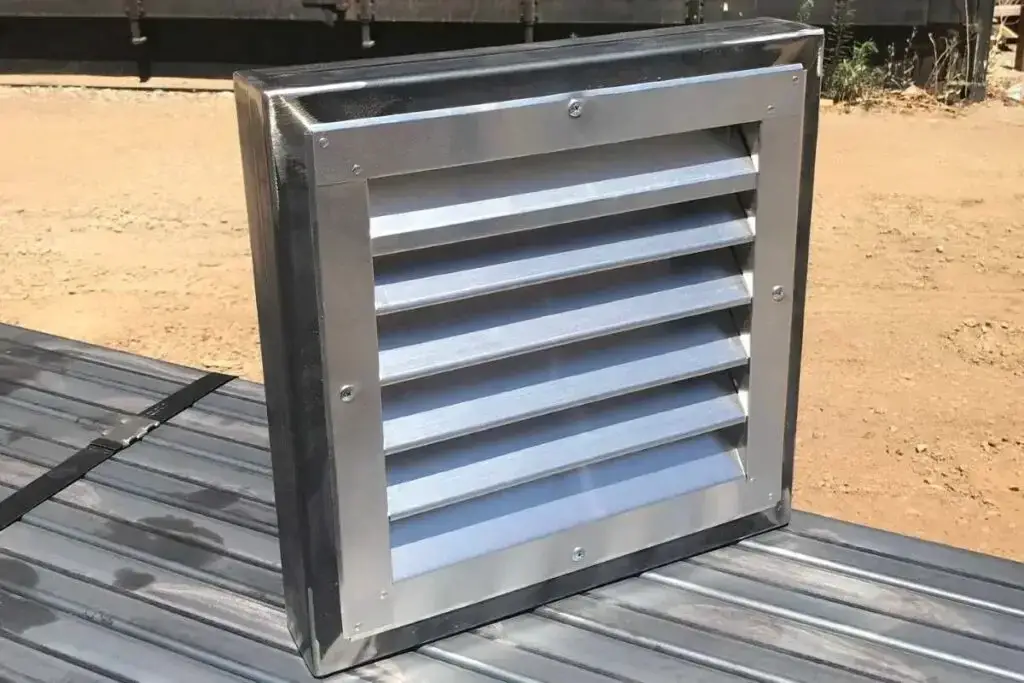
Louvered vents are large openings covered by overlapping steel plates placed vertically or horizontally on the side walls of your container. The size of these louvers varies depending on how much airflow you want and where they’re placed on the shipping container.
Louvered vents are meant to keep the rain out of your home while still letting air in. The louvers are like the blades of a fan. When open, they allow air to flow into the structure; another set prevents rain from getting in.
Read More: Here Are The Best 15 Energy-Efficient Homes and Costs
3. Turbine/Whirlybirds can Help Ventilate a Shipping Container
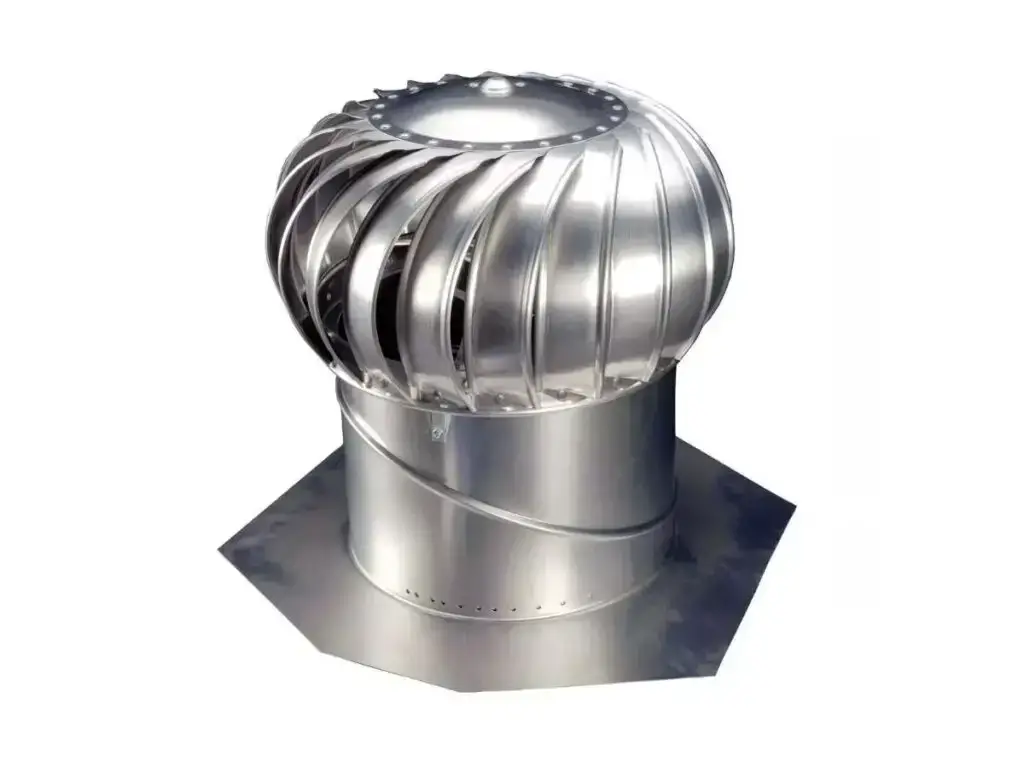
Turbine vents are small air vents that can be installed on a container to allow airflow in and out of the container. Turbine vents can be installed in any position. However, they are most commonly installed on top of the container.
The purpose of turbine vents is to allow air to circulate within the container. This helps prevent condensation from forming inside the container.
Whirlybirds are similar to turbines, but they have an extra function that allows them to act as an exhaust vent for hot gases or smoke when there are no other means of removing them.
Whirlybirds come in various sizes and shapes; however, the most common type is circular, with three blades attached around a central axis. The blades rotate when wind passes through them, creating an airflow into and out of the whirlybird vent hole at its base (usually positioned near ground level).
Read More: How Do You Prevent Mold In Shipping Containers? Easy
4. Fixed or Portable Air Conditioning to Ventilate a Shipping Container
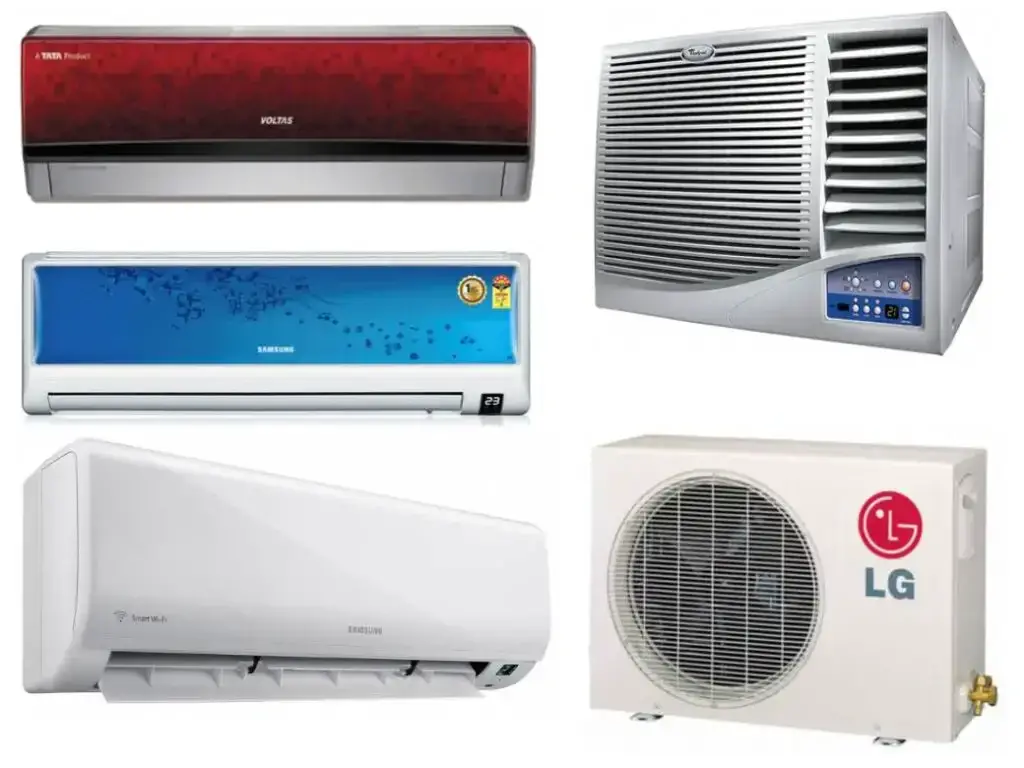
One way to ventilate your shipping container is to use fixed of portable air conditioning. These units are easy to move around and can be used in any building or structure, including your shipping container home!
They are designed to cool down large spaces and maintain them at a comfortable temperature throughout the day and night. These units come in both electric and gas models.
Still, they both have some disadvantages when compared with heat pumps – namely that they use more energy and produce more noise than heat pumps do when operating at total capacity.
This also helps keep things cool while adding extra insulation to your home (which helps keep energy costs down).
Ventilation Solutions for Temperature Control in Shipping Containers
In certain instances, maintaining a controlled temperature inside a shipping container becomes crucial. In such cases, specialized ventilation solutions, such as air conditioning or insulation, may be necessary to ensure the cargo remains at the desired temperature.
Ventilation Options for Customized Shipping Containers
If you are working with a customized shipping container, such as one modified for specific purposes, it is crucial to consider the ventilation requirements of your unique setup.
Customization can affect the airflow and may require specialized venting solutions to provide adequate ventilation.
Assessing Ventilation Needs for Your Shipping Container
A properly ventilated shipping container is crucial to maintaining the quality and condition of the items stored inside. When assessing the ventilation needs for your shipping container, there are several factors that you should consider.
Factors to Consider for Effective Ventilation
- Size and volume of the shipping container: The size and volume of your shipping container will determine how much ventilation is needed to ensure proper airflow. Larger containers may require additional ventilation to prevent moisture build-up and stale air.
- Climate and temperature conditions: The climate and temperature conditions in your specific location will play a significant role in determining the ventilation requirements. Hot and humid climates may require more ventilation to prevent the container from becoming too hot and condensation from forming.
- Type of items to be stored in the container: The type of items that will be stored in the container should also be taken into consideration. Some items may be more susceptible to moisture damage or require specific temperature conditions, which may require additional ventilation.
Calculating Suitable Ventilation Requirements Based on the Above Factors
Once you have considered the above factors, you can proceed to calculate the suitable ventilation requirements for your shipping container. It is recommended to consult with a professional to ensure accuracy in your calculations.
By assessing the size and volume of your container, the climate and temperature conditions, and the type of items to be stored, you can determine the appropriate ventilation solution for your specific needs.
Steps to Vent a Shipping Container Effectively
Proper ventilation is crucial for maintaining a well-functioning shipping container. In this section, we will guide you through the steps to vent a shipping container effectively.
A. Preparing the Shipping Container for Ventilation
1. Cleaning and removing any obstructions: Before installing vents, ensure that the container is clean and free from any debris or obstructions. A thorough cleaning will optimize air circulation within the container.
2. Identifying suitable vent locations: Assess the container and determine the most appropriate locations for vents. Consider factors such as prevailing winds, access to power sources, and overall airflow to maximize ventilation efficiency.
B. DIY Methods for Installing Vents in Shipping Containers
1. Tools and materials required: Gather the necessary tools and materials for installing vents. You may need a drill, screws, silicone sealant, ventilation grilles, and a marker.
2. Step-by-step instructions for installing vents: Follow these instructions to install vents in your shipping container:
- Using a marker, mark the locations where you will install the vents.
- Pre-drill holes at the marked locations.
- Apply silicone sealant around the holes to prevent moisture seepage.
- Securely attach the ventilation grilles using screws.
- Double-check the installation to ensure proper fit and stability.
C. Best Practices for Venting Shipping Containers
1. Proper positioning and spacing of vents: Place vents strategically to facilitate balanced airflow. Optimal positioning and spacing will ensure effective ventilation throughout the container.
2. Considerations for protection against moisture, pests, and external elements: Install appropriate ventilation accessories such as mesh screens or filters to prevent insects, rodents, or debris from entering the container. Additionally, consider using vent covers or louvers to protect against moisture or extreme weather conditions.
By following these steps and implementing best practices, you can effectively vent your shipping container and maintain a well-regulated environment for your goods.
Ensuring Proper Ventilation Maintenance
A. Regular inspection and cleaning of vents
Just like any other part of your shipping container, proper maintenance is essential to ensure the effectiveness of ventilation. And so regularly inspecting and cleaning vents will help prevent blockages and maintain optimal airflow.
B. Troubleshooting common ventilation issues
From time to time, you might encounter ventilation issues with your shipping container. It’s important to be prepared and know how to troubleshoot common problems. Check for obstructions or damage to the vents and make necessary repairs or replacements.
C. Monitoring temperature and humidity levels within the container
Without a doubt, the temperature and humidity levels inside your shipping container can have a significant impact on proper ventilation.
Additionally, monitoring these levels will allow you to make adjustments as needed to ensure optimal conditions. Install a thermometer and humidity gauge inside the container, and regularly check and record the readings.
Read More: Arizona Solar Panels – All About and Complete Expert Scrutiny
How Heat Pumps Can be Used to Ventilate a Shipping Container
Heat pumps are an excellent option for providing heat during cold winters. You can use them as your primary heat source or an additional heating source when it is freezing outside. They’re also good at cooling down hot summer days and nights.
They use electricity to move heat and can be used to transfer heat out of your shipping container home during hot weather. Heat pumps can be used in containers for temperature control year-round. They extract heat from the outside air and pump it through the house and into the attic space.
A fan circulates this warm air throughout the home, keeping it at a consistent temperature. Note that these systems are great for keeping your home comfortable without having any moving parts (like an actual furnace or radiator).
However, they are expensive to install and can only be used where there is access to electricity.
Read More: Simplified explanation of a solar water heater working principle.
Ventilating a Shipping Container Using Portable Dehumidifiers

Certainly, a portable dehumidifier is a small unit that can be placed inside the shipping container to remove moisture and humidity. These units are usually connected to an outdoor hose so you can empty them regularly.
They work by extracting water from the air and then releasing it outside the container. They’re easy to install and operate and don’t require any power source. The downside is that they have a limited capacity and can only be used in small areas of the container.
They can be plugged in and run all day, removing moisture from the air as they operate. When they reach capacity, they will shut off until they are emptied of water. The portable dehumidifier also helps eliminate odors from your home while increasing air quality at the same time.
This can help improve your overall health and well-being while living in your shipping container home.
Read More: Beautiful 5-Bedroom shipping container home: How much do you really need?
Vent in The Container for Ventilation of Your Container Home
You can use vents to create airflow in order to ventilate your shipping container. You can do this by installing them on opposite sides of the space.
This allows for natural ventilation and temperature reduction; as hot air is sucked out from one side while fresh air blows past you through the other.
Installing vents on the side is your cheapest option, but you should consider installing insulation and a ventilation system. If you plan on using the container as living space, install vents in the ceiling and floor—and possibly even an air conditioning system.
Read More: California Solar Panel – Here’s How To Go About It
How to Protect Your Container Home From Moisture Buildup
It is essential to know how to protect it from damage if you have just purchased a shipping container. Shipping containers are made from steel, which is a very durable material and, therefore, highly resistant to damage.
However, if you take the proper steps, your new buy could avoid more trouble than its worth. First things first – don’t forget about the weather! If you plan on leaving your shipping container outdoors, make sure that you cover it with a tarp or similar protective measure.
1. Use Desiccants to Absorb Ambient Moisture
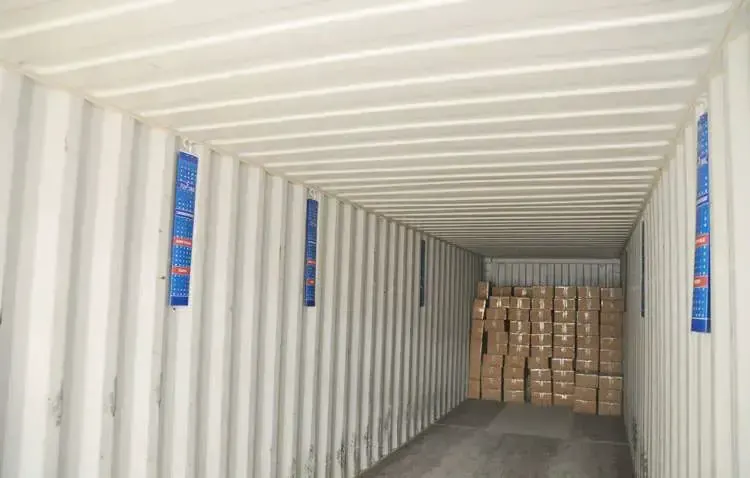
Desiccants are another method of ventilating a shipping container home. These are materials that can be added to a container to absorb moisture.
They are typically used with other methods of protecting your shipment from water damage, such as using an absorbent pad. Desiccants protect against formation of water vapor inside of your container home and help keep your items dry.
To avoid damaging your goods, desiccants should be placed next to your product, not directly in contact with it. We recommend placing the desiccant inside a small plastic bag before adding it to your shipment.
Read More: How to perfectly waterproof your shower
2. Insulate Your Container to Reduce Moisture Buildup
Insulation is another effective way of protecting shipments against moisture damage. In addition to keeping heat out, insulation also helps keep heat in, reducing condensation formation on the inside walls of your container.
There are many types of insulation available, including bubble wrap and foam peanuts; however, these should be avoided if possible, as they can trap small water drops within the walls of the container during transport and cause damage upon arrival at their destination.
| Image | Product Title | Features | Price |
|---|---|---|---|
 | Buy on Amazon | ||
 | Buy on Amazon | ||
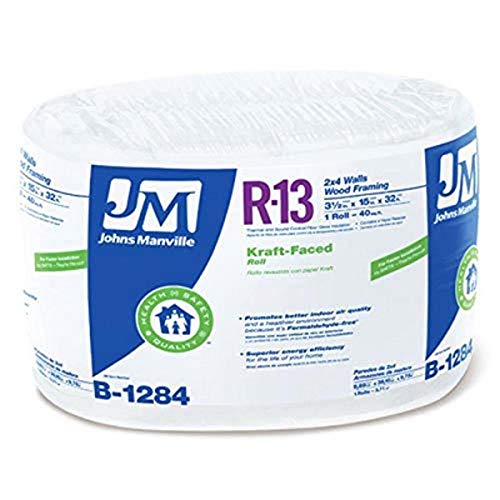 | Buy on Amazon |
Read More: Effective ways to stop condensation in a container home
3. Keep Things Open as Often as Possible
If you’ve got a small space, it’s tempting to close it off with doors or windows. However, this will trap water drops inside the container and make it even more susceptible to mold and mildew.
If there needs to be more air moving around (especially if you live in a humid climate), consider installing fans in each room so that air can move around freely.
Read More: GAF Timberline Solar Shingles In-Depth Expert Review
4. Install Ventilation in Your Container Home
Ventilation is especially important for outdoor growing setups because outdoor plants are exposed to rain and other weather elements that increase the risk of mold growth.
If you’re using an indoor structure, ensure enough ventilation so that air can flow freely through the container without trapping moisture in any areas where water may collect on leaves or soil.
- 10" Diameter Wall-mounted Exhaust Fan from iLiving.
- Automatic shutter, variable speed controller, and thermostat.
- Powerful 65W motor with 820 CFM rating.
- 1200 sq.ft Coverage Area.
- Silver color.
- Low noise operation.
- Durable aluminum body with blades constructed from polypropylene plastic.
- Suitable for various ventilation and cooling applications.
Read More: CertainTeed Solar Shingles Expert Review
5. Install A Dehumidifier to Help Ventilate Your Shipping Container
To remove water vapor from the air. It’s important that you choose one that’s appropriate for the space you’re trying to keep dry.
If there is no electricity available in your container, use a solar-powered model instead of a regular one. This will ensure that your product stays dry at all times.
- 62 oz. dehumidifier with auto shut off and sleep mode to maximize efficiency.
- Suitable for a 950 square foot space, perfect for bedroom, basement, home or RV.
- Ultra-quiet operates at under 39dB- Quiet operation.
- Lightweight and portable, easy to move and store.
- 24 hour auto shut off timer and continuous drainage system.
- Easy-to-use control panel and LCD digital display.
- Filter can be easily cleaned to reduce bacteria build-up.
- Removable tank for convenient emptying and water-level indicator for easy monitoring.
- Empty water-tank warning for convenience and safety.
- Energy efficient to save on your electricity costs.
Read More: Solar Manufacturing – Exhaustive Expert Review
6. Choose The Right Pallets
Choose suitable pallets. Pallets made of wood can absorb water quickly and will not be ideal for storing food or other perishable products in containers because they are prone to infestation by insects and rodents, as well as mold growth due to high humidity levels in enclosed spaces such as containers.
Instead of using wooden pallets, use plastic ones instead, as they have better insulation properties and don’t absorb moisture easily as wooden ones do.
There are many advantages to ventilating a shipping container, but it’s essential to understand the different options before deciding which ventilation system suits you.
Read More: How to build a container home for noobs, beginners, and the unqualified
Advantages of Ventilating a Shipping Container
1. Ventilating Your Shipping Container Home Can Reduce Moisture Levels
If you do not ventilate your shipping container properly, there may be high moisture levels inside the container, which can cause damage to your goods.
Moisture is also insufficient for your health, so it is best to keep moisture levels down with good air circulation throughout the day and nighttime.
The better quality containers will have ventilation holes in the side walls so fresh air can get into the container, and stale air can get out of it too.
If this is not done correctly, there will be high condensation inside the units, which can cause damp spots on your shelves or, even worse, mold growth, which is unsuitable for anyone’s health!
Read More: Are Solar Panels Worth The Investment? Here’s The Truth
2. Your Items Will Be Protected from Heat Damage
Heat is dangerous for all sorts of products. If you store your products in an unventilated shipping container, they can get damaged or even destroyed when the temperature rises above 60 degrees Fahrenheit.
This can happen during the summer and even in climate-controlled storage facilities if the humidity levels are high enough. Considering that most people don’t want to pay heating bills during hot weather, this can be an expensive problem for many people.
Read More: Luma Solar Shingles Complete Expert Review
3. Ventilating a Shipping Container Allows You to Breathe Easier On Hot Days
Ventilating a shipping container home will allow fresh air to flow into your building and keep out moisture and pollutants that could cause mold growth or other issues with indoor air quality.
This is especially important if you use your storage unit as living space while you work on construction projects or other tasks outside the home daily.
Read More: Tesla Solar Roof vs Traditional Solar – Compare The Differences
4. Ventilated Shipping Container Homes Won’t Have Mold or Mildew Growth
Shipping containers are made from corrugated steel, which is prone to rust. This can lead to fungal growth and a nasty smell.
Ventilating a shipping container will help prevent these problems by allowing airflow inside the container and keeping your property dry.
Read More: How To Optimize Your Tesla Powerwall During A Power Outage
5. It Will Be Easier to Maintain a Cool Temperature Inside
The temperature inside your container can change widely depending on the time of day and season of the year. A small window does not provide enough airflow to keep things cool when it’s hot outside.
But with adequate ventilation, you should maintain temperatures within an acceptable range all year long.
Read More: An exclusive look at the different types of shipping containers
Conclusion
By following this detailed content plan, you have learned comprehensive information on how to effectively vent a shipping container.
Throughout this guide, we have covered various aspects such as understanding shipping containers, assessing ventilation needs, step-by-step instructions for installation, and maintenance tips.
Ventilation is crucial for shipping containers as it helps maintain proper air circulation, prevents condensation, and ensures the safety and preservation of stored items.
Without adequate ventilation, humidity and moisture can build up, leading to potential damage and deterioration.
By implementing the steps and tips outlined in this guide, you can create a well-ventilated environment inside your shipping container.
To recap, here are some key points about the importance of ventilation in shipping containers:
- Proper ventilation helps prevent condensation and moisture buildup.
- A well-ventilated container reduces the risk of damage to stored items.
- Ventilation promotes air circulation and reduces the chances of foul odors.
- Regular maintenance and monitoring of ventilation systems are essential.
As a final tip, consider the following considerations for effective ventilation:
- Ensure all vents are properly sealed to prevent insects or debris from entering.
- Consider the climate and specific needs of the items stored in the container when determining ventilation requirements.
- Monitor the humidity levels inside the container to ensure optimal ventilation.
Chiefly, if you encounter any difficulties or require expert advice, do not hesitate to seek professional assistance. Professionals specializing in shipping container ventilation can provide tailored solutions and guidance based on your unique requirements.
With the information provided in this guide, you are now equipped with the knowledge to vent your shipping container effectively.
Finally, by implementing proper ventilation, you can ensure the longevity and preservation of your stored items.
Read More on Shipping Container Homes In Arizona: Stylish And Affordable




